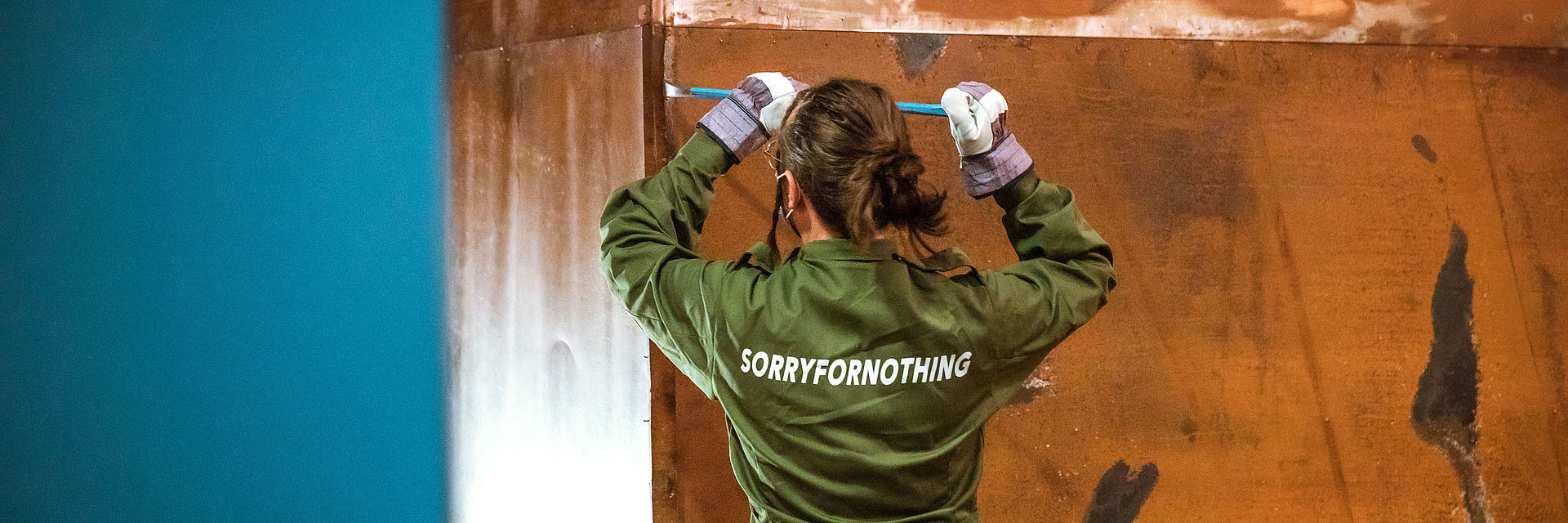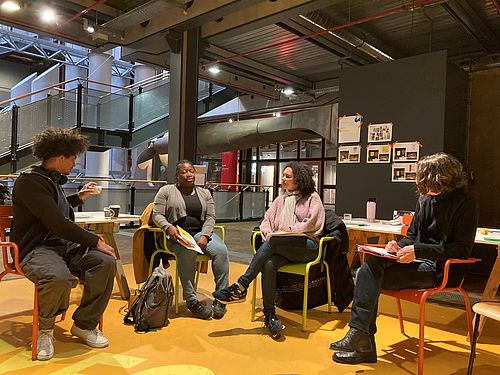Open access publication in German
The Deutsches Technikmuseum, the Stadtmuseum and the Brücke-Museum provide insights into the incipient decolonisation of current museum practices.

The Deutsches Technikmuseum is reviewing the role colonialism plays in its collection. The dismantling of a problematic exhibit about the slave trade in Brandenburg has initiated a comprehensive process of decolonization.
The transatlantic slave trade was one of the most momentous episodes of forced migration in human history. It inflicted unimaginable suffering on enslaved people of African origin, and its effects can still be felt today in the lives of Black people. The fact that Germans were involved in this human trafficking is not widely known. Only now is it slowly receiving critical attention and public awareness.
From 2003 to 2020, the Deutsches Technikmuseum’s Shipping exhibition contained an exhibit on the slave trade in Brandenburg and Prussia. Its intention was to shed light on this little-known aspect of regional history. Over the years, one installation in the exhibit received warranted criticism from activists in civil society groups, including Initiative Schwarze Menschen in Deutschland (Initiative for Black People in Germany) and Berlin Postkolonial. They criticized the installation as a simplistic and inappropriate portrayal of this traumatic chapter in history. Black people were reduced to their physical characteristics and assigned a role as passive, objectified victims. Their own history of resilience and resistance was not explored.
SDTB / H. Hattendorf
SDTB / H. Hattendorf
SDTB / H. Hattendorf
SDTB / H. Hattendorf
SDTB / H. Hattendorf
August 23 is the International Day for the Remembrance of the Slave Trade and its Abolition. On that occasion in 2020, the artists Monilola Olayemi Ilupeju and Philip Kojo engaged critically with the installation in two interlocking performances. The idea behind the performances was to provide a symbolic impetus for a process of decolonization in museums.
In her performance “Wayward Dust,” Monilola Olayemi Ilupeju collected the dust that had gathered on the installation over time. Dust is largely composed of organic material like exfoliated skin. This dust thus came from the people who visit the museum or work there. It also symbolizes the time that has gone by since the installation was unveiled, embodying the need for change in the museum. Furthermore, it is a symbol of vitality, and as such it stands in contrast to the installation’s lifeless polystyrene figures. They are out of step with the direction the museum is now taking.
Philip Kojo Metz focused on deconstructing the installation’s frame and its many components. In his performance, “SEU – SORRYFORNOTHING EMERGENCY UNIT,” he and his team dismantled the entire installation, thereby also symbolically deconstructing its narrative. Metz and his team created an empty space that recalls the empty spaces in the standard German historical narrative.
Aesthetic commentary on SORRYFORNOTHING by the philosopher Pablo Genazzano.
The performances can be viewed on the Deutsches Technikmuseum’s YouTube channel. The entire video lasts about six hours, of which the first two hours are the main focus.

In tandem with the cultural activist project Dekoloniale Memory Culture in the City, the Deutsches Technikmuseum has now begun the process of decolonization. Since late 2021, the Leerstelle has provided a space for carrying forward the process begun as part of the pilot project “Colonial History in the Deutsches Technikmuseum – A New Approach to the Slave Trade in Brandenburg and Prussia.”
An interdisciplinary team of artists, curators, collaborative partners, and the museum’s Shipping and Outreach departments is exploring the topic of the slave trade in the light of previously marginalized perspectives. The goal of their discussions is to develop a common stance than can serve as a basis for a future exhibit. In monthly workshops, experts of color from outside the museum give their input, adding voices to the team’s participatory co-curation efforts. The focus is on perspectives from people who experience racism, from both the past and the present. Through a mindful process of sensitization, exchange, and collaboration, concrete exhibition ideas and formats emerge, as do impulses for long-term change that will be expanded to the entire museum.
A consensus has emerged that the topic of the slave trade should be presented in a way that especially encourages children, adolescents, and school classes to engage with issues of colonialism and decolonization. The exhibit will put a spotlight on neglected histories and biographies, thus emphasizing the agency of Black people and challenging traditional historical narratives and portrayals. The specific focus on the slave trade in Brandenburg makes it possible to highlight past power relations, dependencies, and global interrelations. It thereby creates a path to recognizing and coming to grips with slavery’s residual effects in our own day and everyday life. At the same time, it will facilitate the identification of new formats for educating the public and engaging with the topic.
This project is the foundation for a long-term process of decolonizing the Deutsches Technikmuseum, one that will eventually be expanded to all its exhibitions.
As a first milestone in this process, the Deutsches Technikmuseum participated as a location in the 2022 Dekoloniale Festival.